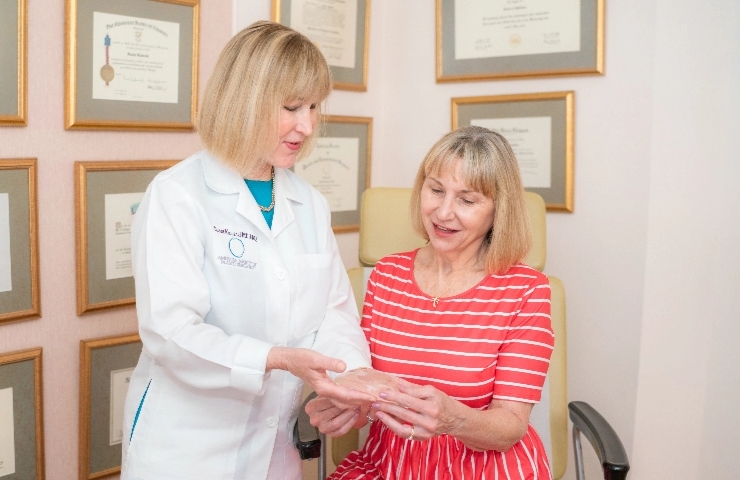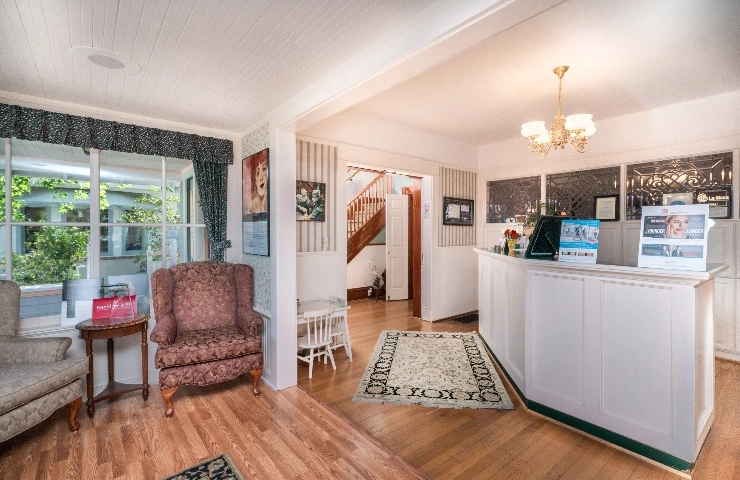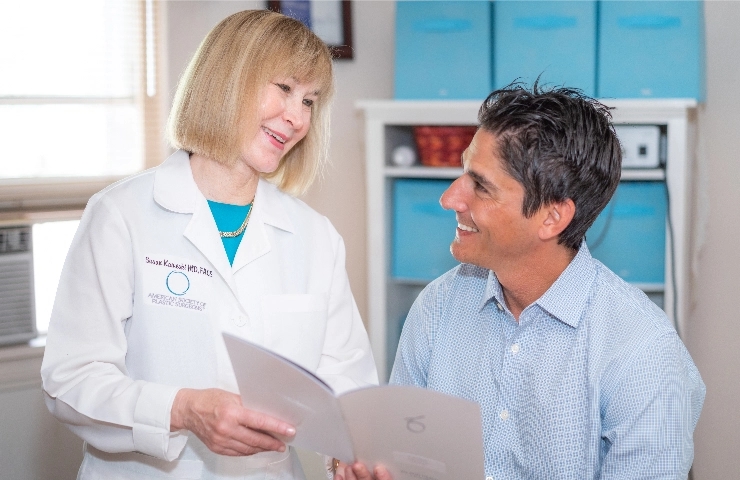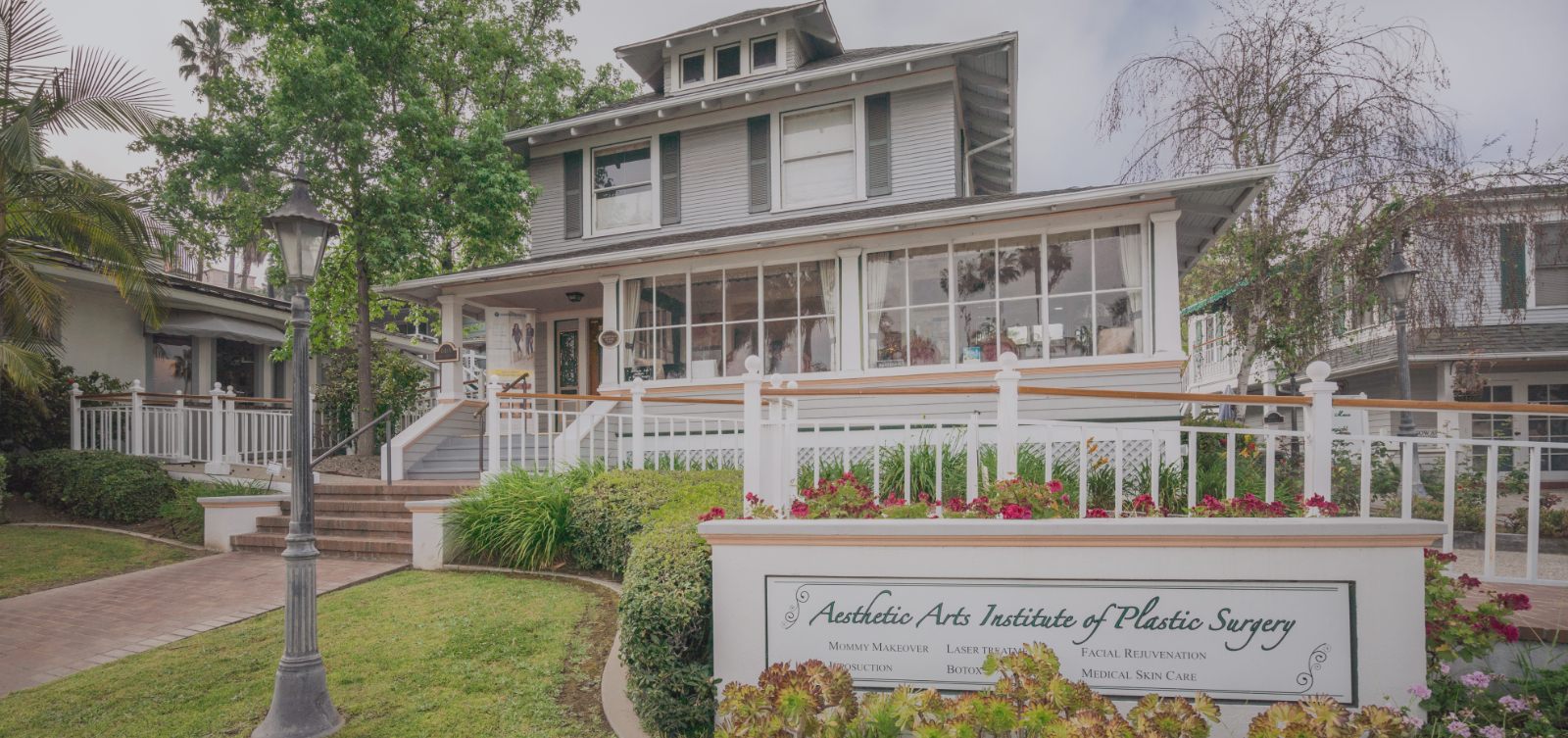More than 14 million adults in the United States have rosacea. Though it does not affect your health, this common skin condition typically affects the face and how you look. Aesthetic Arts Institute of Plastic Surgery in San Diego offers various rosacea treatment options to prevent redness, bumps, and visible blood vessels on the face, helping you achieve clearer, healthier-looking skin.
What Is Rosacea?
Rosacea is a chronic inflammatory skin condition that causes a rash and reddened skin, usually on the nose and cheeks, with flare-ups persisting throughout your life. Symptoms usually start around age 30, and the redness becomes ruddier and more persistent over time. Blood vessels can also become more noticeable.
Although rosacea can affect anyone, it is most common in people with fair skin and women, but it can be more severe in men.
How Is Rosacea Diagnosed?
There is no specific diagnostic test to determine whether you have rosacea. Still, your doctor will identify the condition after thoroughly examining your skin, discussing your symptoms, and learning what triggers worsen your skin’s reddening.
You may also have to undergo testing for other conditions that can cause similar symptoms, like lupus or menopause.
Causes
The cause of rosacea is not clear. Some theories on why it develops involve:
- Conditions that affect the immune system
- Microscopic skin mites
- H. pylori infection
- A protein malfunction
Many things can cause flare-ups, including:
- Hot drinks
- Spicy food
- Some blood pressure medications
- Temperature extremes
- Alcoholic beverages
- Emotions
- Exercise
Some cosmetics and even hair care products can also cause flare-ups.
Symptoms
The symptoms of a rosacea flare-up include:
- Visible veins
- Rash
- Skin thickening
- Facial redness
- Swelling
- Facial burning and stinging
In some people, rosacea can also irritate the eyes, making them appear bloodshot and watery. You may also experience styes and swelling in your eyelids. If left untreated, severe cases can even cause vision damage.
How Is Rosacea Treated?
There is no cure for rosacea, but you can manage symptoms. To know which option is the right one for your needs, you will have to share all of your triggers and how long the flare-ups generally last.
You might also have to change your lifestyle, including staying out of the sun, avoiding spicy foods, and more.
Types of Rosacea Treatments
The severity of the symptoms, how often you experience them, and how long they last can all influence the type of treatment that works best for you. Treatments include:
- Medications
- Laser options
- Dermabrasion
Many oral medications can help with some rosacea symptoms, including antibiotics. Topical drugs can also help reduce flushing by constricting blood vessels. The effects are temporary, so you must apply these topical medications daily.
Laser options help remove visible blood vessels and excessive redness from the treatment area, making them some of the best treatment options. They can also offer longer-lasting results than topical or oral medications.
Dermabrasion exfoliates and removes the top layers of dry and dead skin cells. It can help create collagen, encouraging the production of healthier skin.
What to Expect from Rosacea Treatment
At your initial consultation with one of our skincare professionals, you will want to share all of the details of your condition and skincare routine, as well as any other medical history details or medications that may affect your treatment.
You will receive an examination to determine the right treatment for you and instructions on preparing for your appointment. If you are getting microdermabrasion or laser therapy, you must avoid the sun, harsh skin care products, and other facial procedures that can make your skin more sensitive.
During the Appointment
Treatment will begin by ensuring your skin is clean. For dermabrasion, a diamond wheel will remove dead skin cells in the treatment area and stimulate new skin growth. It can take anywhere from a few minutes to an hour, depending on the size of the treatment area. For laser therapy, you may receive a light topical anesthetic before treatment.
After the Rosacea Treatment
You want to follow a few guidelines to ensure you can heal correctly after treatment.
- Apply ice to the treatment areas
- Avoid direct sunlight
- Wear sunscreen
- Avoid harsh skin care products
- Wait two to three days before wearing makeup
Make sure to use any medications as prescribed.
How Many Treatments Will I Need to See Results?
You will need periodic treatments to get lasting results. When receiving laser therapy, you will likely need two to eight sessions spaced four to six weeks apart to give your skin time to heal. You can always ask about the number of necessary sessions before deciding on a treatment option.
Seek Treatment for Your Rosacea Symptoms
If you have rosacea symptoms that affect how you look, turning to the skincare professionals at Aesthetic Arts Institute of Plastic Surgery in San Diego, CA, can allow you to get some relief and help you look and feel your best.
Learn more about our services and how we can help, or contact us today.



